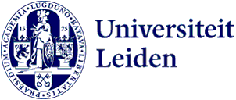Efektivitas Modul Bentuk Molekul berbasis PjBL Terintegrasi Augmented Reality terhadap Literasi Digital Peserta Didik Effectiveness of Project-Based Learning (PjBL)-Based Molecular Shape Module Integrated with Augmented Reality on Students’ Digital Literacy

Main Article Content
Abstract
The development of digital technology has significantly impacted the field of education, particularly in the creation of interactive and contextual learning media. This study aims to determine the effectiveness of a molecular shape module integrated with Augmented Reality (AR) in enhancing the digital literacy skills of Phase F high school students. A quasi-experimental method was employed using a Nonequivalent Control Group Design. The study population included all Phase F high school students, with sample selection conducted through purposive sampling. The results indicate that the AR-based module is effective in improving students’ digital literacy, as evidenced by an N-gain score of 0.683 in the experimental class, categorized as moderate. Supporting data from teacher observation sheets and digital literacy questionnaires showed an average achievement of 86.26%, classified as effective. The results of the independent sample t-test revealed a significance value (2-tailed) of less than 0.05, indicating a significant difference between the experimental and control classes. Therefore, the AR-integrated molecular shape module is proven to be effective in enhancing students’ digital literacy and contributes to the advancement of technology-based learning that is innovative and responsive to contemporary educational needs.
Downloads
Article Details

Authors retain copyright and grant the journal right of first publication with the work simultaneously licensed under a Creative Commons Attribution-NonCommercial-ShareAlike 4.0 International License that allows others to share the work with an acknowledgement of the work's authorship and initial publication in this journal.
References
Abdinejad, M., Talaie, B., Qorbani, H. S., & Dalili, S. (2021). Student Perceptions Using Augmented Reality and 3D Visualization Technologies in Chemistry Education. Journal of Science Education and Technology, 30(1), 87–96. https://doi.org/10.1007/s10956-020-09880-2
Apridar. (2024). Harmoni Media dan Metode dalam Pembelajaran IPA (Issue 1).
Bell, S. (2010). Project-Based Learning for the 21st Century: Skills for the Future. The Clearing House: A Journal of Educational Strategies, Issues and Ideas, 83(2), 39–43. https://doi.org/10.1080/00098650903505415
Faridah, N. R., Afifah, E. N., & Lailiyah, S. (2022). Project-Based Learning: Its Effects on Numeracy and Digital Literacy Proficiency in Elementary Education. Jurnal Basicedu, 6(1), 709–716.
Hudha, C., Wulandari, P., Rachmawati, S., Ekonomi, P., & Timur, J. (2025). Kerapuhan literasi: paradoks transformasi digital di kalangan generasi z 1,2,3. 16(November 2024), 429–441.
Hurrahman, M., Erlina, E., Melati, H. A., Enawaty, E., & Sartika, R. P. (2022). Pengembangan E-Modul Berbasis Multipel Representasi Dengan Bantuan Teknologi Augmented Reality untuk Pembelajaran Materi Bentuk Molekul. Jurnal Pendidikan Sains Indonesia, 10(1), 89–114. https://doi.org/10.24815/jpsi.v10i1.22579
Kominfo. (2022). Digital Literacy Status in 2021-2022. November, 205–207.
Kurniawan, D. A., Aldila, F. T., Setiya Rini, E. F., Perdana, R., & Andriyanto, A. (2025). Project-Based Learning E-Module: Analysis of Student Response and Its Correlation to Responsible and Independent Characters. Journal of Innovation in Educational and Cultural Research, 6(2), 304–314. https://doi.org/10.46843/jiecr.v6i2.579
Kustini, S., Herlinawati, H., & Indrasary, Y. (2021). Implementasi Pembelajaran Berbasis Project-Based Learning Untuk Meningkatkan Keterampilan Literasi Digital Mahasiswa Politeknik Negeri Banjarmasin. Jurnal INTEKNA : Informasi Teknik Dan Niaga, 21(1), 30–40. https://doi.org/10.31961/intekna.v21i1.1122
L.S.Vygotsky. (1978). Mind in Society : The Developement of Higher Psychological Processes. In Harvard University Press. https://doi.org/10.3928/0048-5713-19850401-09
Mabubah, N. N., Wigati, I., Astuti, R. T., Islam, U., Raden, N., & Palembang, F. (2022). Hubungan Literasi Digital Dengan Hasil Belajar Siswa Pada Materi Koloid. Jurnal Al’ilmi, 11(2), 2022. http://jurnal.radenfatah.ac.id/index.php/alilmi
Masgumelar, N. K., & Mustafa, P. S. (2021). Teori Belajar Konstruktivisme dan Implikasinya dalam Pendidikan. GHAITSA: Islamic Education Journal, 2(1), 49–57. https://doi.org/10.62159/ghaitsa.v2i1.188
McComas, W. F. (2018). Programme for International Student Assessment (PISA). The Language of Science Education, 79–79. https://doi.org/10.1007/978-94-6209-497-0_69
Ng, W. (2012). Can we teach digital natives digital literacy? Computers and Education, 59(3), 1065–1078. https://doi.org/10.1016/j.compedu.2012.04.016
Pranova, A. L., Muntholib, & Dasianto. (2022). Upaya Meningkatkan Kecerdasan Visual-Spasial Siswa Kelas X melalui Penggunaan Simulator Interaktif pada Materi Bentuk Molekul. Jurnal Pendidikan MIPA, 12(1), 1–7.
Rahardaya, A. K., & Irwansyah, I. (2021). Studi Literatur Penggunaan Media Sosial Tiktok Sebagai Sarana Literasi Digital Pada Masa Pandemi Covid-19. Jurnal Teknologi Dan Sistem Informasi Bisnis, 3(2), 308–319. https://doi.org/10.47233/jteksis.v3i2.248
Rahayu, D., Puspita, A. M. I., & Puspitaningsih, F. (2020). Keefektifan Model Project Based Learning Untuk Meningkatkan Sikap Kerjasama Siswa Sekolah Dasar. Pedagogi: Jurnal Penelitian Pendidikan, 7(2), 111–122. https://doi.org/10.25134/pedagogi.v7i2.3626
Rosidin, Aina, M., Ahmad, Saifullah, Putranto, A., & Rahardian, R. L. (2024). Peran Teknologi Augmented Reality (AR) Dalam Pembelajaran Interaktif Di Perguruan Tinggi. Jurnal Review Pendidikan Dan Pengajaran, 7(4), 92–97. https://doi.org/10.53717/idealmathedu.v7i2.228
Sugiantara, I. P., Listarni, N. M., & Pratama, K. (2024). Urgensi Pengembangan Media Pembelajaran Lingkaran Untuk Meningkatkan Hasil Belajar Siswa. Jurnal Literasi Digital, 4(1), 73–80. https://doi.org/10.54065/jld.4.1.2024.448
Sugiyono. (2017). Statistika untuk Penelitian. ALFABETA.
Sweller, J. (2019). Cognitive Load Theory. Advances in Cognitive Load Theory: Rethinking Teaching, 1–12. https://doi.org/10.4324/9780429283895-1
Sylvia Dwi Erman, Yerimadesi*, Andromeda, Fitri Arsih, Jhon Hendri, N. E. (2025). Efektivitas Media Augmented Reality Terhadap Literasi Digital Dalam Pembelajaran Larutan Penyangga di SMA. Journal Of Chemistry Education And Integration, 04(02), 87–99.
Ufaira Hafiza, Yerimadesi*, Andromeda, Fitri Arsih, Jhon Hendri, A. Z. (2025). Efektivitas Media Pembelajaran Asam Basa Terintegrasi Augmented Reality Terhadap Literasi Digital Peserta Didik. Journal Of Chemistry Education And Integration, 04(02), 75–86.
Wahyudi, W., Efendi, E., Usman, N. F., & Shofwan, I. (2024). Project-Based Learning dalam Kurikulum Merdeka Belajar (Issue September).
Wigati, I., Lestari, W., Sholeh, M. I., Yuniar, D., Islam Negeri Raden Fatah Palembang, U., & Selatan, S. (2023). Meta-analisis literasi digital pada pembelajaran Orbital : Jurnal Pendidikan Kimia. Orbital: Jurnal Pendidikan Kimia, 7(1), 92–102. https://sinta.kemdikbud.go.id.
Find the perfect home for your research! If this journal isn't the right fit, don't worry—we offer a wide range of journals covering diverse fields of study. Explore our other journals to discover the ideal platform for your work and maximize its impact. Browse now and take the next step in publishing your research:
| HOME | Yasin | AlSys | Anwarul | Masaliq | Arzusin | Tsaqofah | Ahkam | AlDyas | Mikailalsys | Edumalsys | Alsystech | AJSTEA | AJECEE | AJISD | IJHESS | IJEMT | IJECS | MJMS | MJAEI | AMJSAI | AJBMBR | AJSTM | AJCMPR | AJMSPHR | KIJST | KIJEIT | KIJAHRS |





















